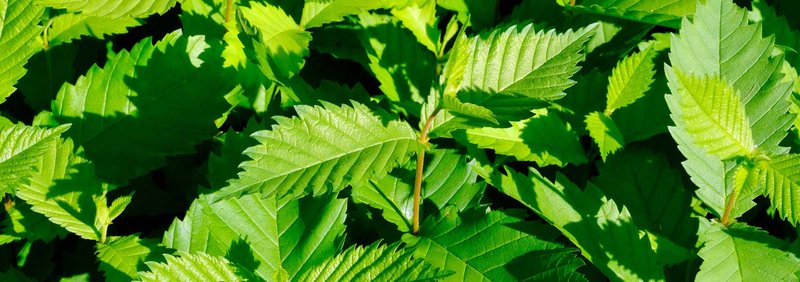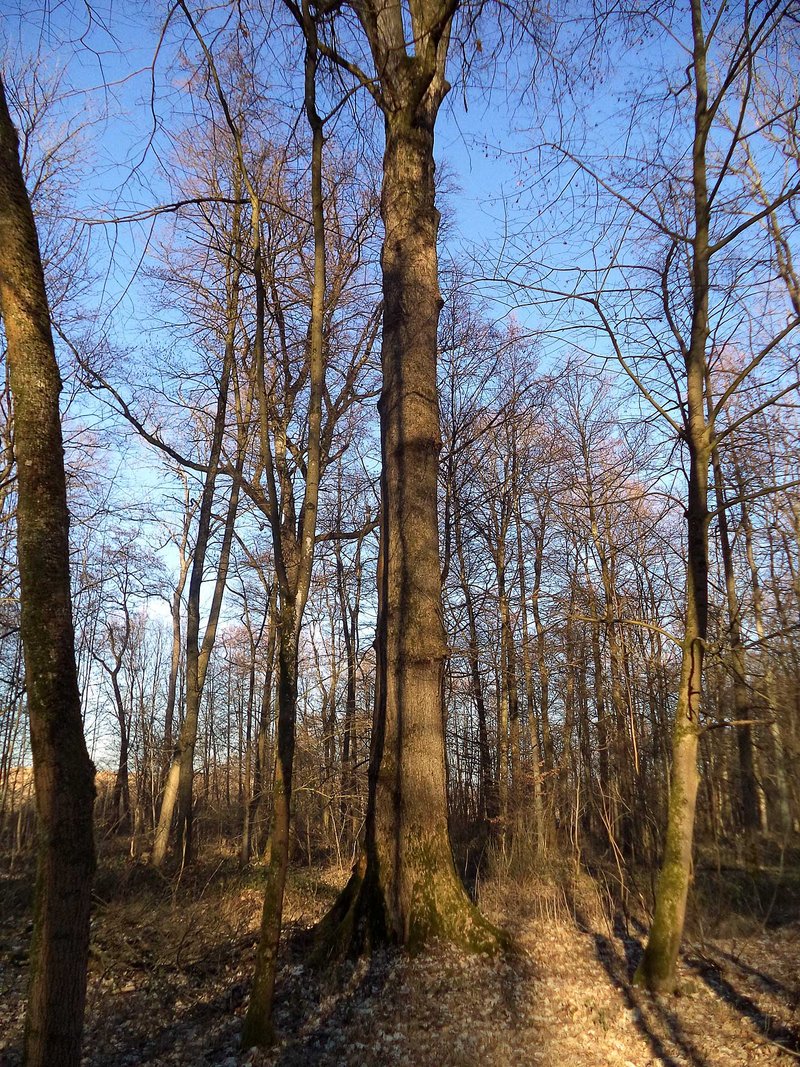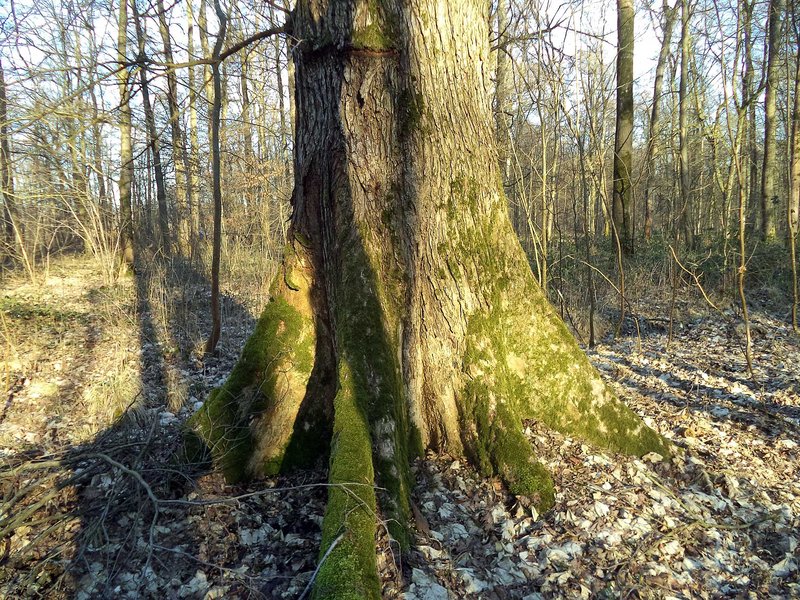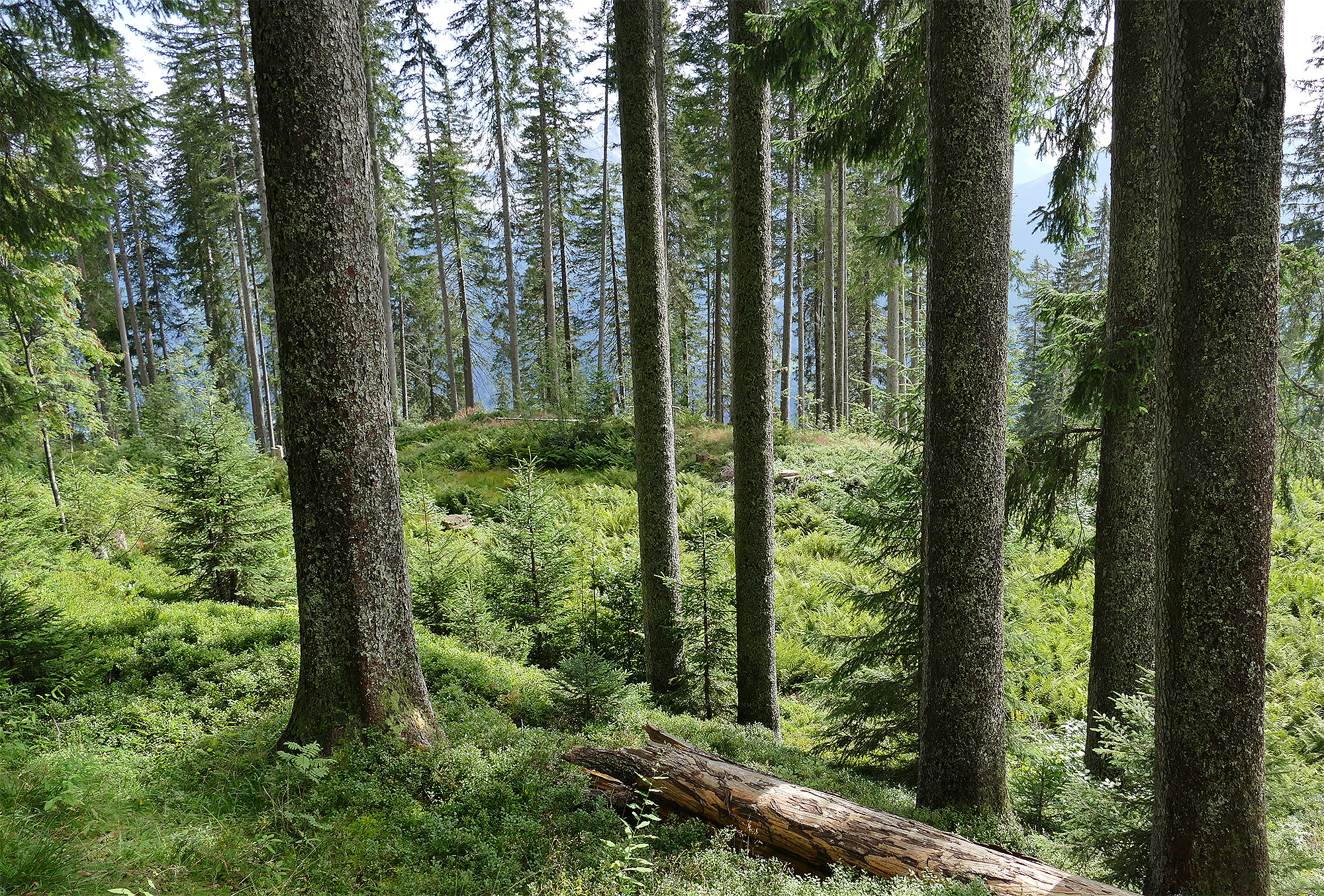
Fig. 1: Juvenile European white elms in a tree nursery. (Photo: FVA/Weidner)

Fig. 2: A giant European white elm 39 metres in height with a DBH of 1.15 metres in Wagshurster Maiwald.

Fig. 3: The typical buttress roots of an old European white elm.
The European White Elm defies Dutch Elm Disease
Of the three native elm species, the mountain and field elms can now be found only sporadically in niche occurrences, decades after the most aggressive form of Dutch elm disease (Ceratocystis ulmi, a vascular fungus) first appeared. Only the European white elm (Ulmus laevis) is left to us in numbers worthy of mention. In many ways, it is viewed significantly differently today than it was a few decades ago. There are obvious reasons for this.
In laboratory testing, the European white elm displays just as high a susceptibility to fungal pathogens as the other two native elm species. It is different in the forest; scientists talk of “field resistance”. The European white elm is less frequently targeted by the carrier of Dutch elm disease, the elm bark beetle; this is probably causative here. Although, on the whole, the tree is a rare occurrence in our forests (in the best-case scenario, it occurs in the lower tenths of one percent), it readily survives to a ripe old age of well over 100 and regenerates regularly by natural regeneration from seeds or basal shoots.
Biologically, it is the last representative of the elm genus and thus contributes to conserving the biodiversity of our forests. Conservationists have long considered it a biologically valuable species that needs to be preserved.
From the forester’s perspective, the view of Ulmus laevis has clearly changed, which is connected with its habitat preferences, among other things; it is one of the few species that comes into its own on floodplains with very adverse prevailing conditions. As a species highly resistant to flooding and strong, seasonally wet soils, it systematically populates habitats with shallow groundwater. In this way, it contributes to the biological stabilisation of forest ecosystems, from which the ash is currently disappearing due to ash dieback. Even the economic view of this species has changed. At hardwood sales in Ortenau, for example, the price per cubic metre has more than doubled in recent years, from around €50 to over €100. Good lots can fetch an isolated premium price of up to €200. Admittedly, European white elm wood has always been considered difficult to work with, but elm wood of any sort (traded and known as “Rüster” in German) has become rare. Fine-grained elm, a much sought-after variety, supposedly occurs much more frequently in the European white elm than in the mountain elm.
Aesthetically speaking, the tree is distinctive. Trees with a trunk diameter of more than one metre and approximately 40 metres tall (fig. 2) are found in optimal habitats, dimensions that are usually achieved only by old oaks and poplars. Enormous buttress-rooted stem bases regularly give older trees a bizarre appearance, of the sort associated with tropical swamp forests (fig. 3). All in all, a great many reasons can be found for preserving the European white elm, which is currently already underway in practice. The frequently abundantly fruiting tree is also very easy to propagate. Which other tree species will provide usable plants as early as the autumn of the seed crop year? Harvest stands are selected for preserving and propagating indigenous provenances and the resulting seedlings are often used in mixed stands in space freed by ash dieback. Together with the targeted conservation of old trees in forest management, it should be possible to secure the future of a so lovably idiosyncratic and rare tree.
